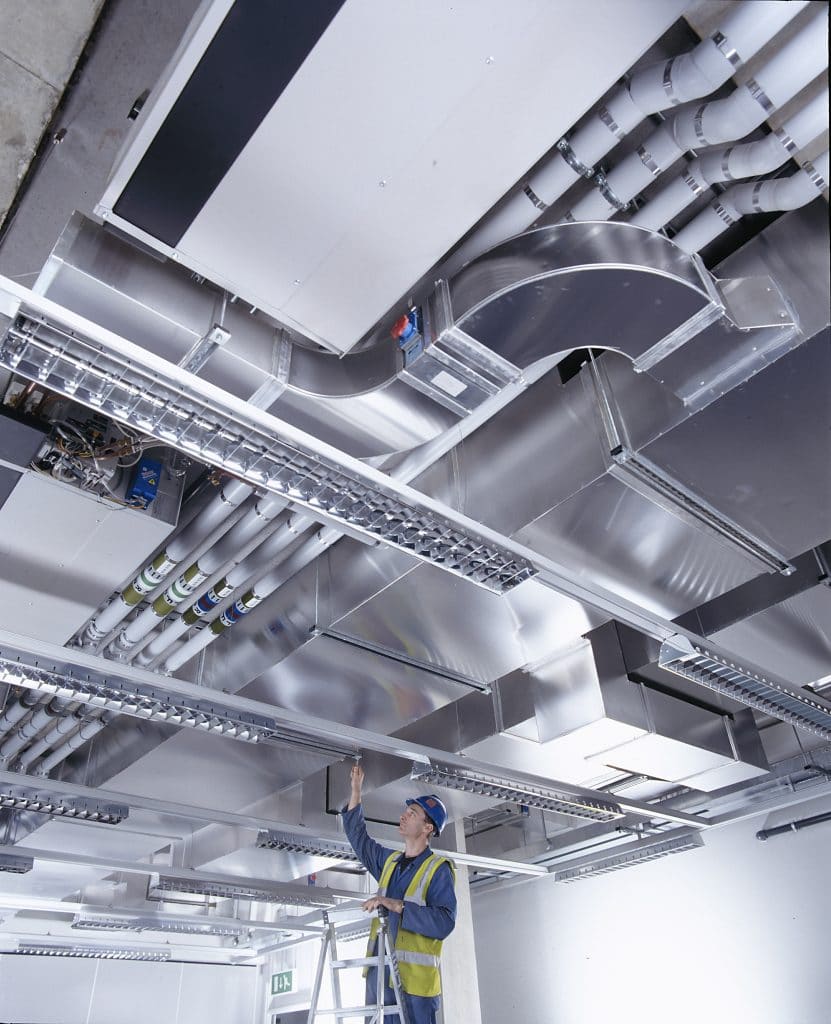
Inventing the wheel isn’t always necessary when it comes to curriculum and training. For SMART Sheet Metal Local 22 in Crawford, New Jersey, finding something new was more about bringing back something that worked years ago, dusting it off and adding to it.
Local 22 hosted its last Building Inspectors Program in 2007. It was brought back when Dave Castner, organizer, marketing director and instructor, inspected at a school improperly installed fire dampers that both the building department and fire inspector had approved. After the New Jersey Department of Community Affairs got involved, the repair was awarded to a union contractor.
Recently, leadership at the local — including Tom Fischbach, president and business manager; Castner; and Charlie Beelitz, training coordinator — saw a niche in the community the program could fill and resurrected it. The first class was held in April 2016 with 50 building inspectors in attendance.
The program uses the curricula of the ITI and hosts local building inspectors to educate them on the correct installation, operation and inspection of fire and smoke dampers.
Through a partnership with Rutgers University and the Department of Community Affairs, Local No. 22 was able to offer the course as a continuing education sponsor, which allowed them to provide continuing education units (CEUs), which every inspector needs to maintain his or her license. Local No. 22 also made the class mobile, filling a 7-foot-by-12-foot trailer with equipment and holding the class on campus.
In five classes in 2016, approximately 200 building inspectors, out of 900 to 1,000 in New Jersey, will complete the program. Fire marshals, engineers and construction managers have also attended the class. Local No. 22 offers this service free of charge, although its investment has weight.
“I’m hoping the program will do a couple things,” Fischbach said. “I hope it will educate the people we are trying to touch — be it the building inspectors or fire inspectors — on what we do and how we do it. In turn, hopefully, it will level the playing field and gain some contractor base in the smaller markets we’re not involved in and protect the larger contractor markets we are in.”
In July 2017, due to New Jersey HVACR Licensing, building inspectors will begin inspecting duct work as well as fire dampers. This class teaches them what they’re seeing, how to detect problems and when to contact experts to provide maintenance. Dampers prevent smoke and fire from traveling through the ventilation system, keeping it contained to the ignition point and away from occupants of the building. Properly working dampers save lives and allow for first responders to enter a building and extinguish a fire safely.
Dampers that were bolted shut during the MGM Fire in 1980 contributed to smoke inhalation cases, which was the leading cause of death during that incident. Dampers take a skilled eye and hand to inspect, and many building inspectors were never taught how to spot a faulty damper.
“Through this program, we’re finding out now the building inspectors aren’t looking at the fire dampers,” said Castner, who instructs the program. “We’re trying to raise awareness; you have to look at the fire dampers. They don’t have the knowledge of the functioning of the whole system. They look at it as cool air and heat, and that’s it.”
Fire damper inspection is only one part of the larger goal Local No. 22 is trying to accomplish with the program.
“We want to bring awareness to what the systems do,” Castner said. “We’re starting with the building inspectors, but we’re trying to get deeper into it. If these people — building inspectors, fire inspectors, fire officials — understand what they’re looking at and how to tell if they’re installed correctly, they will see what effect it has on the efficiency of the system.”
“The program is designed to make them look at all contractors a little bit closer, making them provide an efficient, functioning system where we’re more competitive,” Fischbach added. “It levels the playing field a little bit more.”
This is only the first step in a master plan of education and networking for Local No. 22.
“They’re surprised to see how little changes in design or fittings can really affect the system, and they are really interested in the fire damper inspections,” Castner said. “They come to us, and they know they’ll get the right answers. I think this is the first time in a long time we’re at the front of something, and we’re not trying to chase it.”
Related News
- Kansas funds passenger rail expansion
- SMART’s General President Defends Our Brother
- Maryland Passes Monumental Transit Safety Bill
- Brother Wirth Crowned Champion in 168-Pound Masters Division Victory
- Chairman Pauli Announces Retirement, SMART-TD celebrates his career
- SMART statement on Supreme Court’s decision regarding Kilmar Armando Abrego Garcia’s return to the United States
- SMART-TD Stands With Brother Kilmar Abrego Garcia
- New Mexico Local 1687 sets new precedent with Red Apple Transit
- Tentative Agreement Reached With TransitAmerica Services (TASI)
- SMART issues Monday, April 7, statement on Kilmar Armando Abrego Garcia’s ongoing case